My Certifications
- » ISSA Elite Trainer
- » ISSA Master Trainer
- » ISSA Bodybuilding Specialist
- » ISSA Nutritionist
- » ISSA Certified Transformation Specialist
- » ISSA Specialist in Strength & Conditioning
- » ISSA Specialist in Strength & Conditioning
- » ISSA Online Coach Certification
- » ISSA Weight Management Specialist
- » ISSA Bodybuilding Specialist
- » ISSA Online Coaching Certification
- » ISSA Certified Nutritionist
- » ISSA Certified Fitness Trainer
- » Trainers Guide to Diabetes: Type 1 and 2
- » Three Proven Reasons Your Client's Fat Isn't Falling Off
- » Cardio or Strength First?
- » Heart Rate Training
- » Kettle Bell Training
- » Posture
- » ISSA Certified Fitness Trainer
- » High-Intensity Interval Training (HIIT)
- » Progressive Overload
- » Superiority of Isometric Core Training
- » About Caffeine
- » About Glutamine
- » About Bicarbonate Supplement
- » About BCAAs
- » Combining Supplements
- » Hormones and Performance
- » Training Women
- » Ketogenic Diets
- » Super Foods
ISSA Elite Trainer
The ISSA Elite Trainer credential is awarded to accomplished ISSA Certified Trainers who have proven their competence in personal training and developed expertise in two additional areas of specialization. With scientific backing and practical application in the areas clients need help with the most, this credential proves that extensive education equals results.

ISSA Master Trainer
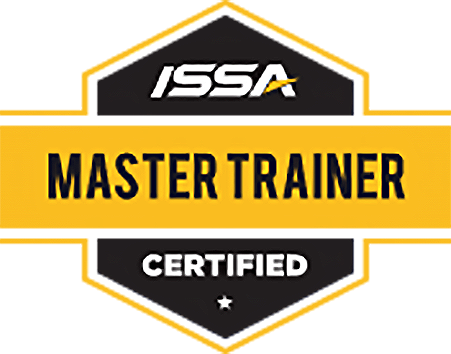
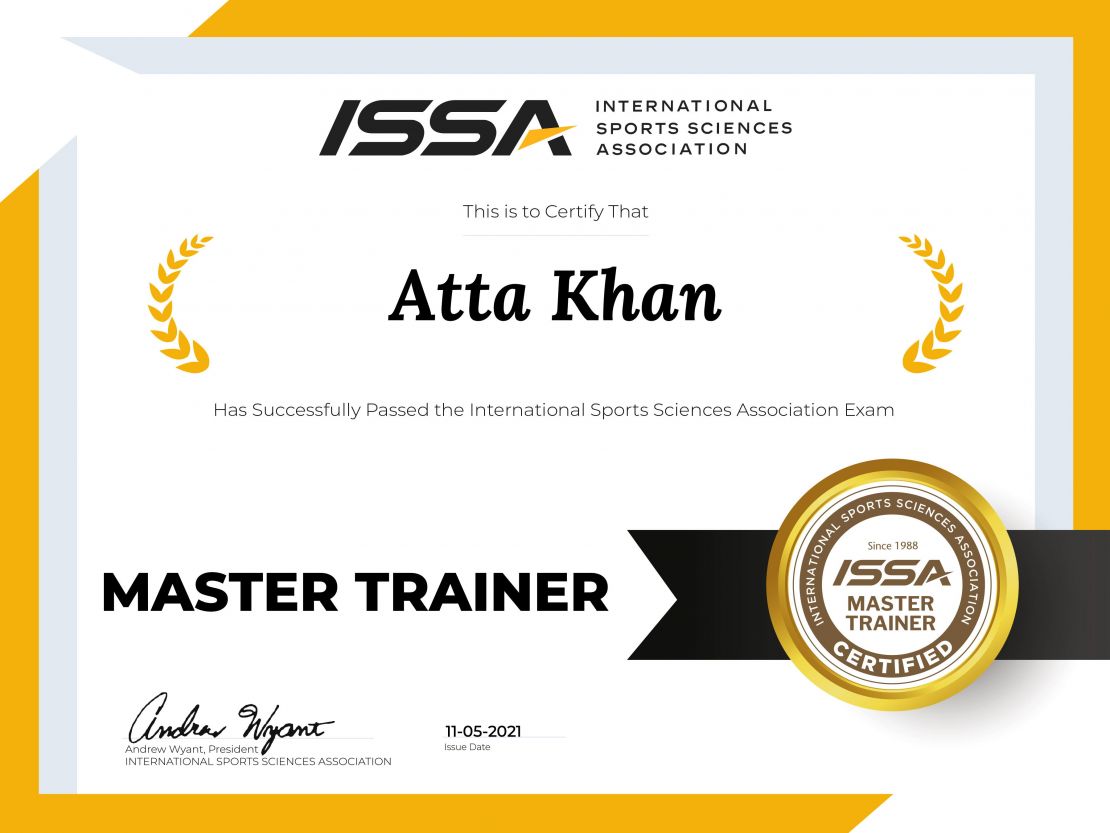
The ISSA Master Trainer credential is awarded only to distinguished ISSA
Certified Trainers who have proven their
competence in personal training and developed expertise in five additional areas of concentration through specialization certifications. This esteemed knowledge means personalized programs and targeted results for any type of client.
ISSA Bodybuilding Specialist

When most individuals think about the sport of bodybuilding, images of big, dumb guys grunting and throwing weight
around are often conjured up. This could not be further from the truth! Serious bodybuilders are part athlete, part scientist, and part artist. As a specialist in this area, I can provide training, recovery, motivational, and nutritional strategies to help you achieve maximal muscle growth and optimize physical appearance.
ISSA Nutritionist
ISSA Certified Transformation Specialist

As a Transformation Specialist I'm armed with the skills and techniques required to truly coach and influence behavioral
patterns as they relate to your physical, mental and emotional well-being. You will see better results faster, and have an easier time with the transition to the behaviors and activities I suggest.
ISSA Specialist in Strength & Conditioning

Until recently, most people believed that power athletes are born and not made. That has changed. Modern training
techniques can make anybody faster, stronger, and more powerful. Athletes at all levels - from grade school to the NFL - can sharpen their competitive edge with the help of an expert trainer. As a certified specialist in this area, I can help you expand your body's capacity for challenging athletic feats while remaining strong and free from injury.
ISSA Specialist in Strength & Conditioning
Until recently, most people believed that power athletes are born and not made. That has changed. Modern training techniques can make anybody faster, stronger, and more powerful. Athletes at all levels - from grade school to the NFL - can sharpen their competitive edge with the help of an expert trainer. As an ISSA student working toward my certification in this area, I will soon be able to help you expand your body's capacity for challenging athletic feats while remaining strong and free from injury.
ISSA Online Coach Certification
ISSA Weight Management Specialist

I am assisting my clients in managing their weight and sustaining a healthy lifestyle. I transform my clients’ bodies inside
and outside the gym.
ISSA Bodybuilding Specialist
When most individuals think about the sport of bodybuilding, images of big, dumb guys grunting and throwing weight around are often conjured up. This could not be further from the truth! Serious bodybuilders are part athlete, part scientist, and part artist. As an ISSA student working towards my certification in this area, I can provide training, recovery, motivational, and nutritional strategies to help you achieve maximal muscle growth and optimize physical appearance.
ISSA Online Coaching Certification

Online and virtual fitness is the most in-demand training option for clients these days. Now more than ever, people want an expert to help them get the results they expect from the gym, at home.
After becoming certified as an ISSA Certified Online Coach, I am equipped with the expertise to get online coaching to meet immediate industry needs.
ISSA Certified Nutritionist
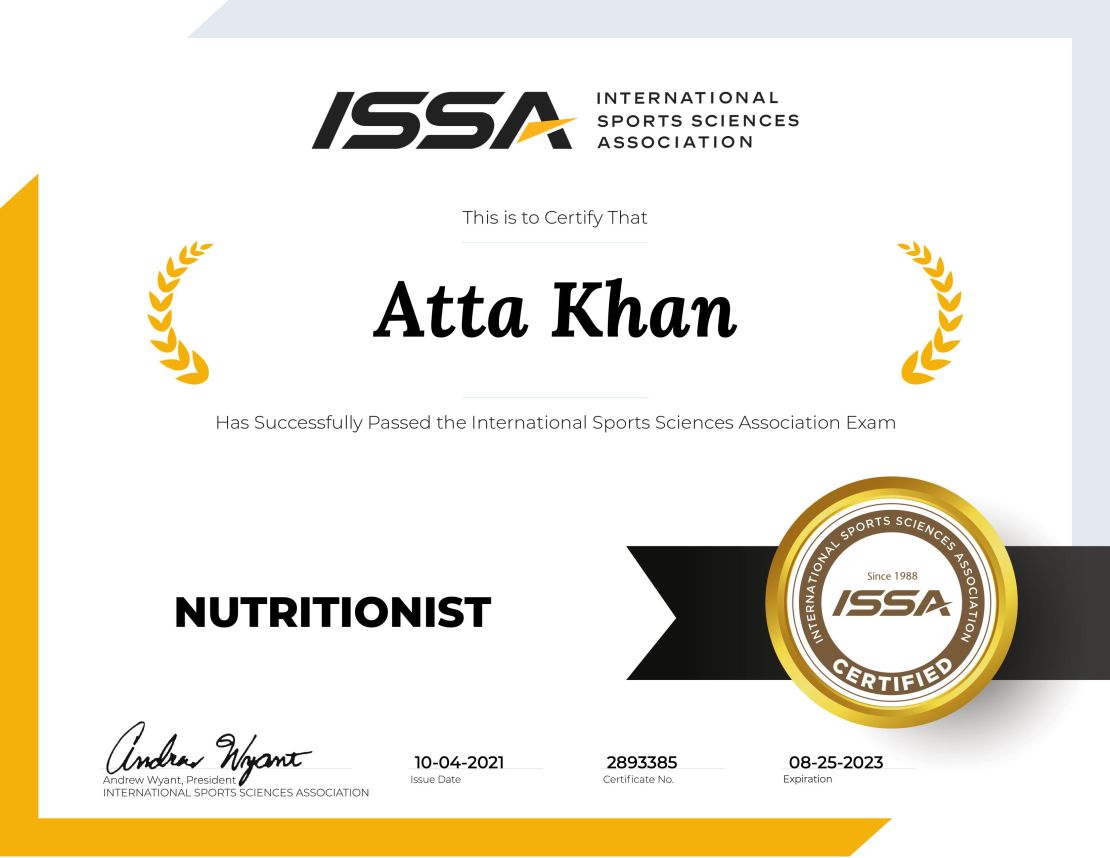
A good exercise program is only half the story. Equally important is proper nutrition. Synthesizing a cutting-edge,
scientifically sound diet and nutrition regimen will radically increase the effectiveness of your exercise training sessions. As a certified specialist in this area, I can help you reach your performance goals faster than you'd previously imagined possible.
ISSA Certified Fitness Trainer
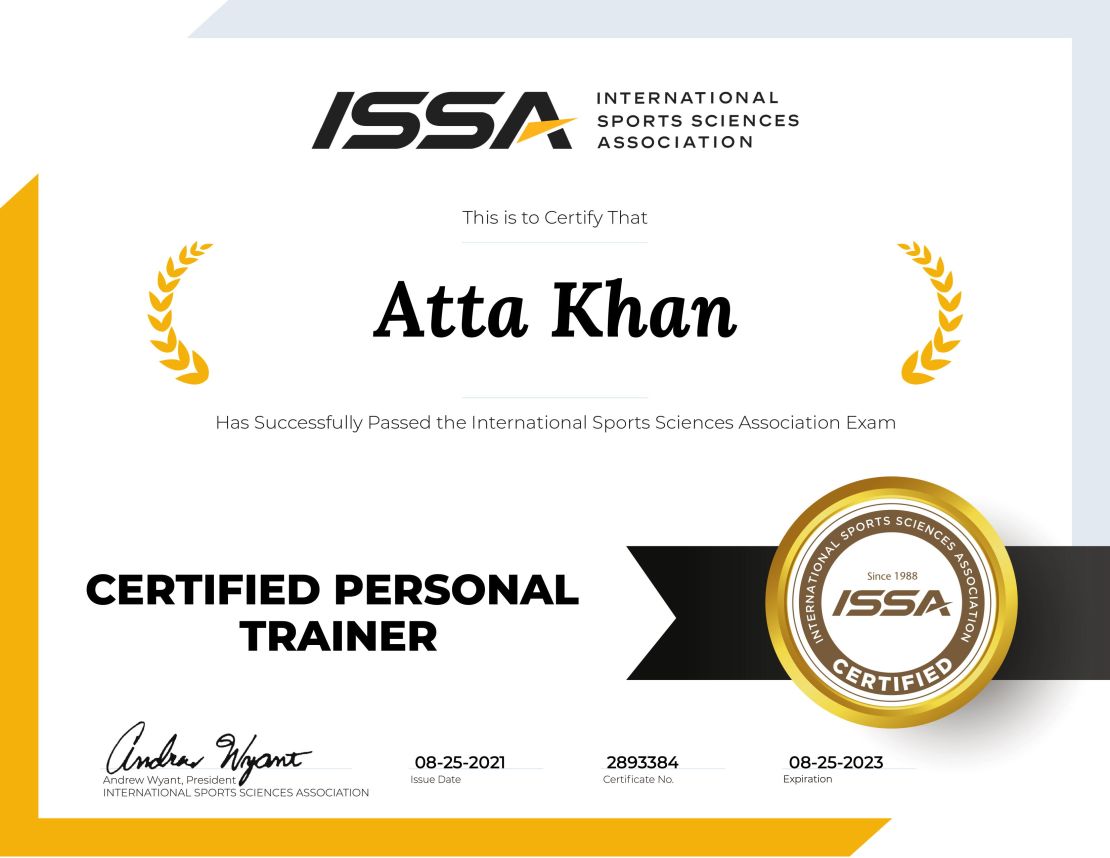
It's no secret - fitness training has been proven to prevent disease, strengthen your health and improve your confidence
and outlook on life. As a certified fitness trainer, I'm deeply trained in everything from muscle mechanics to flexibility and cardiovascular dynamics. So if you want to live a stronger and more confident life, I've got the training and the expertise to help you every step of the way.
Trainers Guide to Diabetes: Type 1 and 2
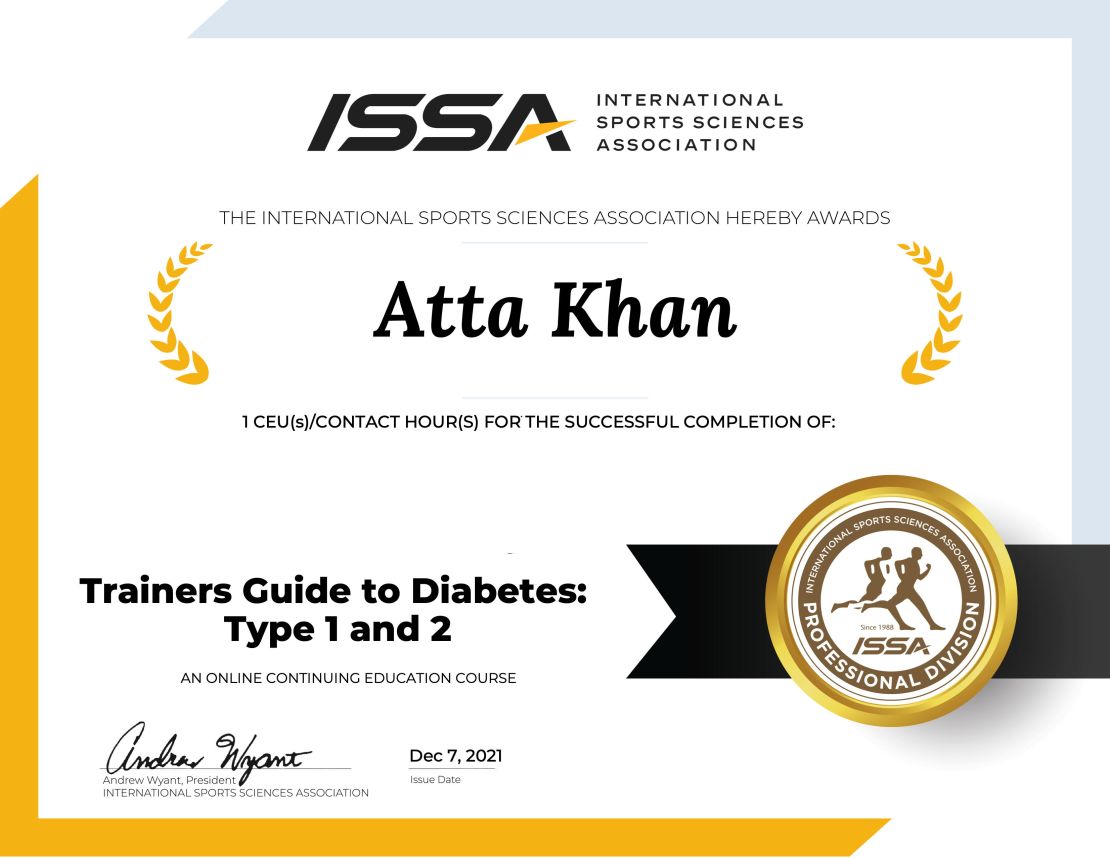
What is Diabetes?
Diabetes is a disease in which the body does not produce or properly use insulin. Insulin is a hormone that is needed to convert sugar, starches and other food into energy required for daily life.
Three Proven Reasons Your Client's Fat Isn't Falling Off
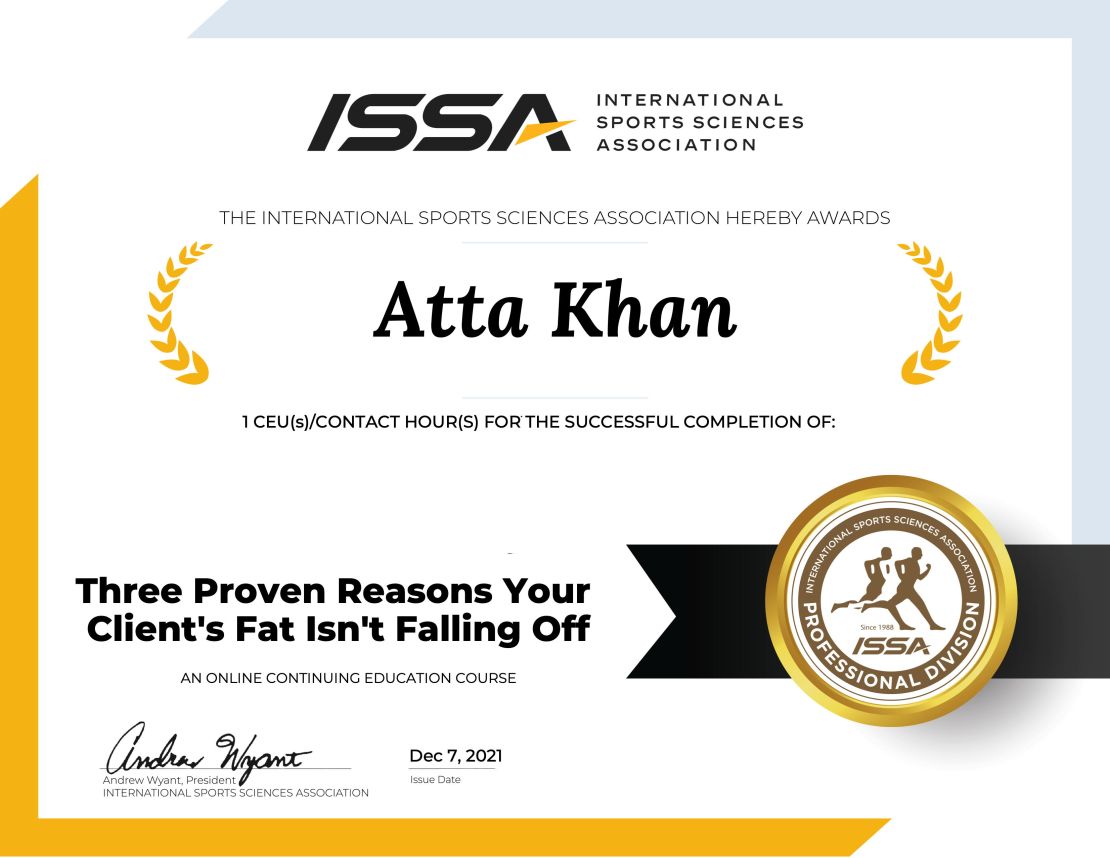
Three Proven Reasons Your Client's Fat Isn't Falling Off
Three Proven Reasons Your Client's Fat Isn't Falling Off
Three Proven Reasons Your Client's Fat Isn't Falling Off
Cardio or Strength First?
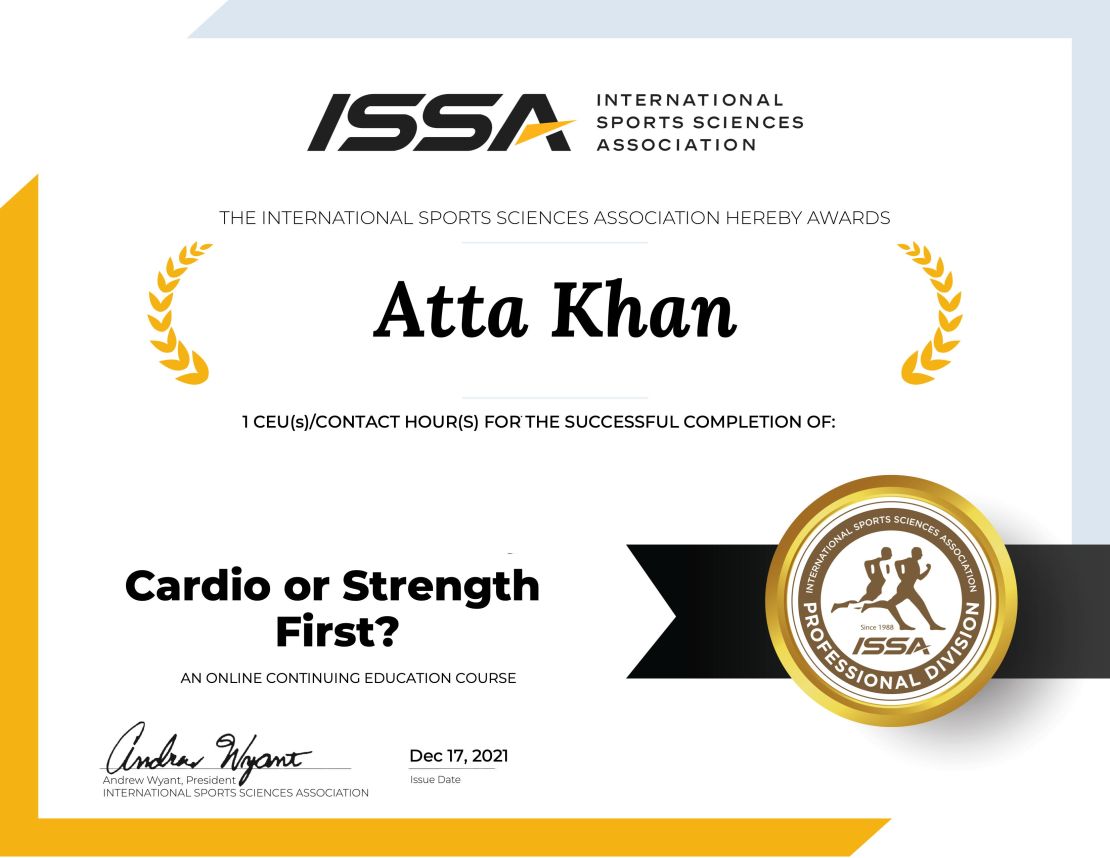
Cardio or strength first? Together? Separate?
Research explains why combining cardio and strength training in the same session can be counterproductive.
Heart Rate Training

Heart rate training can greatly improve the aerobic and anaerobic systems without overtraining. The key is to train in the
correct training zone so that the effort matches the individual's goals.
Kettle Bell Training
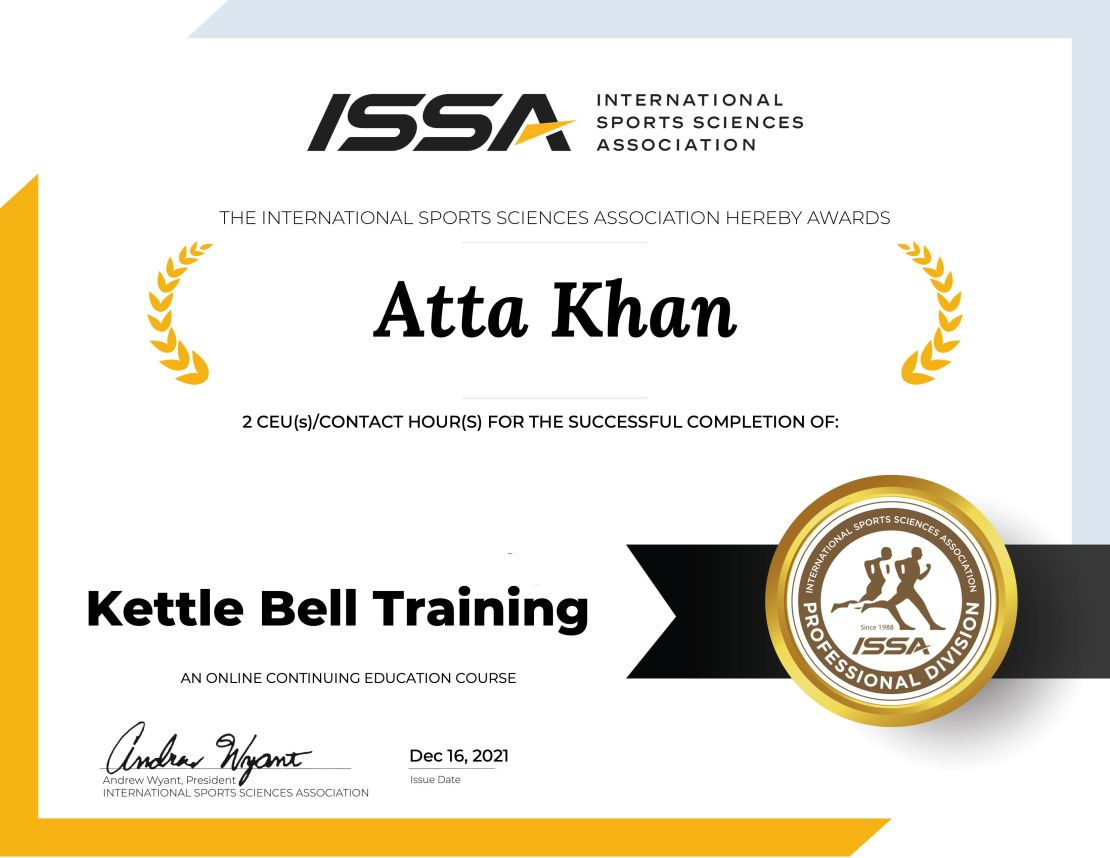
The kettlebell has a unique spherical shape and a handle that provides the user with the ability to work with curvilinear movements and momentum. There are different types of kettlebells, and some athletes will go as far as saying some kettlebells are not real kettlebells. At what weight does a kettlebell become real?
Posture
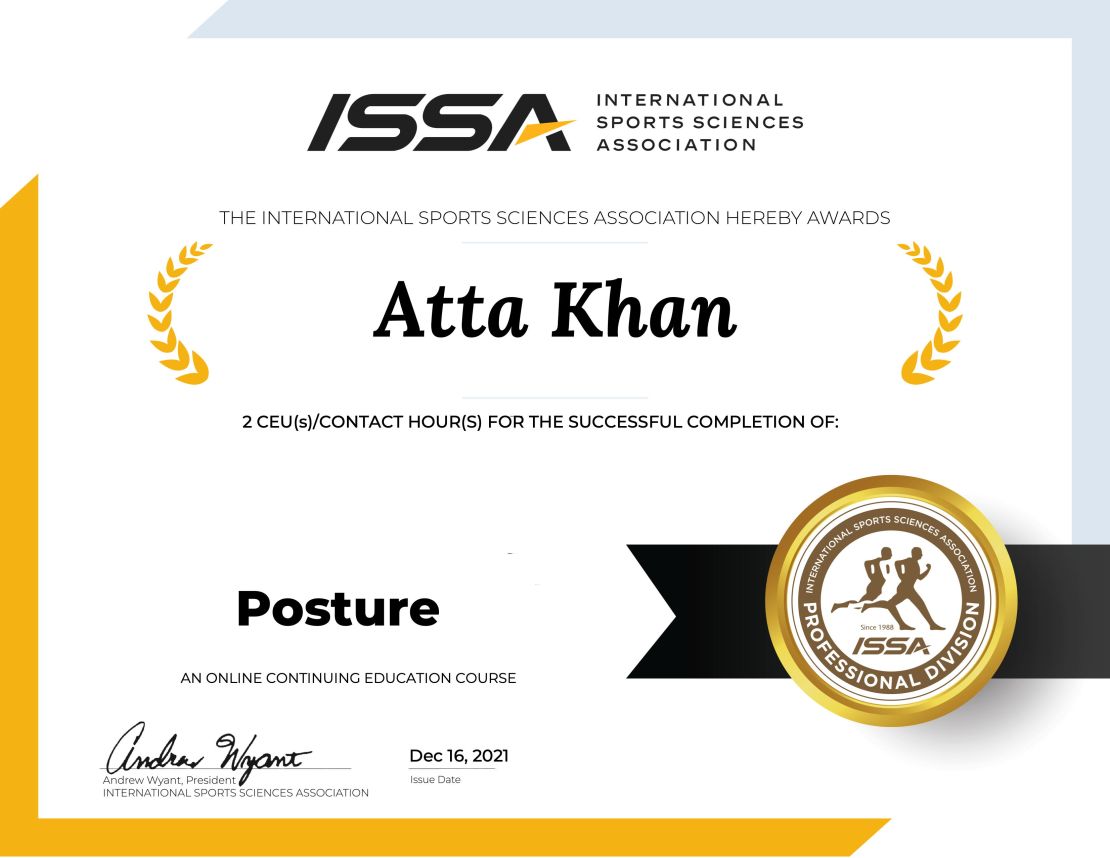
What is ideal and what is faulty?
In our modern day society, good posture is becoming more and more essential to the integrity or our health and well-being. Most of our jobs and transportation involve a seated position for hours at a time. Even the exercise equipment in the gym involves sitting! According to the research of Nachemson, this is the worst position for our spine. In fact, Nachemson estimates 30 -40% more stress on the disc when in a seated position. (1) This doesn't mean we shouldn't sit down, but does, however, indicate we should be very conscious of good posture while we sit or exercise while in a seated position. It also makes you wonder about the exercises being promoted. We sit while traveling to and from work where we sit again, and then off to the gym to sit some more. Sitting or existing in poor postural alignment can eventually cause a host of health problems. Posture is becoming such a "buzz word" that people are promoting themselves as "Occupational Postural Engineers," "Posture Experts," or "Ergonomical Postural Analysts." After reading this article you will have a better understanding of what ideal posture is, how to identify faulty posture and what can be done about it.
ISSA Certified Fitness Trainer
It's no secret - fitness training has been proven to prevent disease, strengthen your health and improve your confidence and outlook on life. As an ISSA student working toward my certification to be a trainer, I'm learning about everything from muscle mechanics to flexibility and cardiovascular dynamics. So if you want to live a stronger and more confident life, I will soon have the training and the expertise to help you every step of the way.
High-Intensity Interval Training (HIIT)
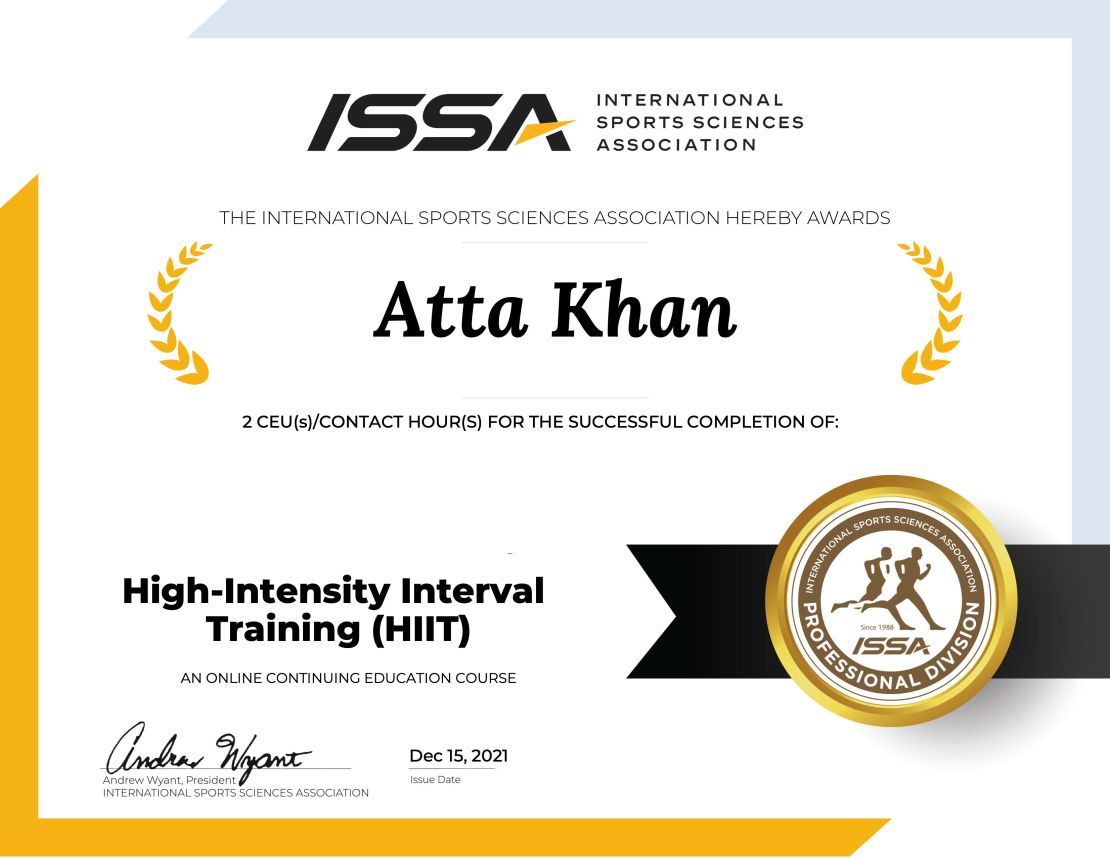
Using high-intensity interval training, clients can burn fat faster and build muscle quicker, making it an ideal workout for clients who say they “don’t have time to workout.” HIIT includes short bursts of intense exercise, alternating with less intense resting periods. The short bursts of exercise are performed at roughly 80 to 95 percent of the client’s estimated maximal heart rate.
Progressive Overload

Progressive Overload
Progressive overload involves the systematic use of a training stimulus that forces the body to adapt and grow.
Superiority of Isometric Core Training
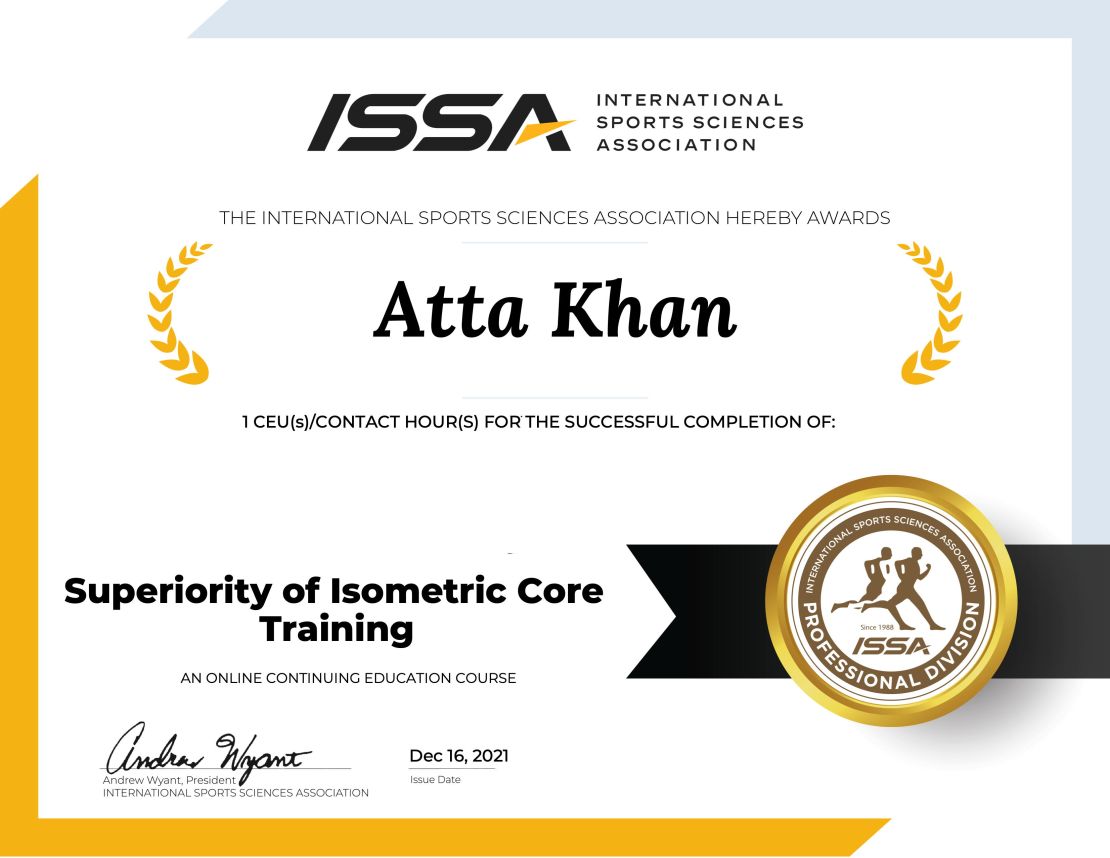
Superiority of Isometric Core Training
Isometric core training has been shown to be more effective for improving core strength and stability, generating greater muscular activity and being more spine-friendly than conventional dynamic core exercise.
About Caffeine
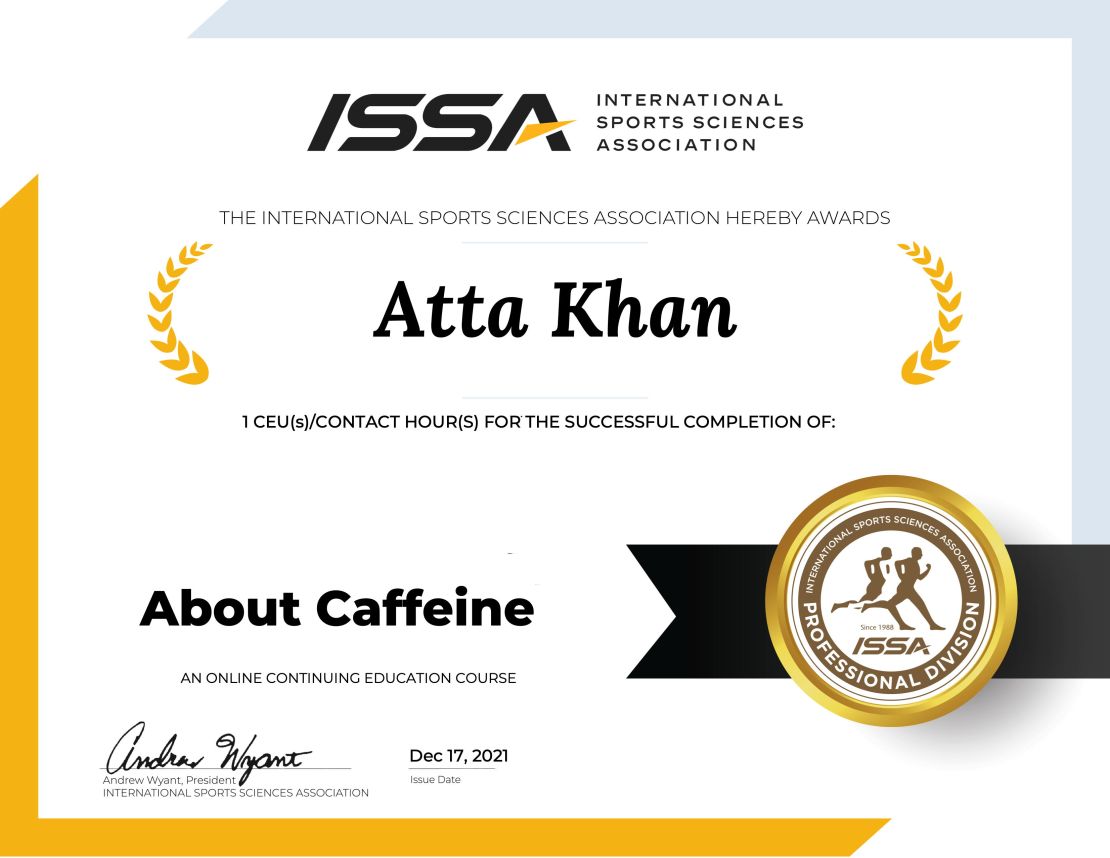
Caffeine is a crystal-like substance found in many beverages (coffee, tea, and cola), medications, and foods. Caffeine is quickly absorbed into the bloodstream and attains maximum values within 15 to 120 minutes of consumption. Through the blood, caffeine is spread to many tissues in the body, including the brain. Enzymes in the liver breakdown caffeine, leaving very little to be cleared in urine.
Caffeine has both central and peripheral effects in the body. In the central nervous system caffeine affects parts of the brain and the spinal cord, while in the periphery it affects organs and tissues. At low doses (2-10 mg/kg), it can cause increased alertness, less fatigue, reduced reaction time, increased ventilation, and poorer performance of some fine motor skills. At higher doses (>15 mg/kg), caffeine can cause nervousness, insomnia, headaches, and unsteadiness. Caffeine also has inconsistent effects on the cardiovascular system. Depending on where it acts in the body, caffeine can either raise or lower heart rate and cause blood vessels to constrict or dilate. Caffeine can cause a mild increase in urine output from the kidneys and dilation of the bronchi. Caffeine causes the release of epinephrine from the adrenal glands, which causes lipolysis (break down of fat) in muscle and adipose tissues. This increased mobilization of free fatty acids can lead to glycogen sparing early in the exercise period because the body uses relatively more free fatty acids for energy.
About Glutamine
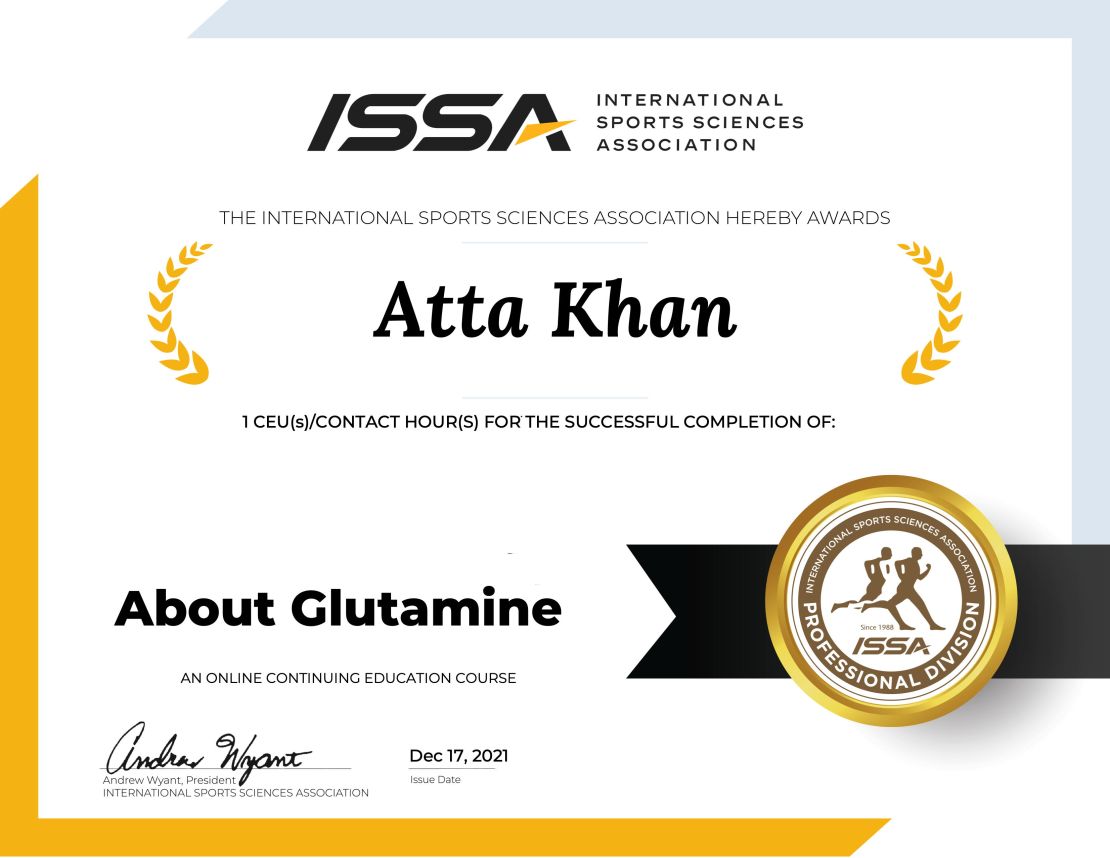
Glutamine is the most abundant amino acid in muscle and plasma. It is used primarily as a fuel source by cells of the small intestine and cells of the immune system (lymphocytes and macrophages). Glutamine affects lymphocyte proliferation (reproduction/multiplication) and macrophage function, both of which are required for optimal immune response against foreign substances (antigens) such as bacteria, viruses or tumor cells. The liver and brain also utilize glutamine, but to a lesser extent, and the kidneys use glutamine only in times when ammonia production is necessary. About 40% of the glutamine used by the body is used by the gastrointestinal tract. This glutamine is made available primarily through the digestion of dietary protein. Practically all of the glutamine absorbed by the intestinal cells is metabolized by the intestinal cells. Therefore, circulating glutamine (in the blood) must be supplied by tissues that have the ability to produce glutamine, namely the liver and muscle.
Since muscle is the dominant supplier, and because muscle provides a store of glutamine, plasma glutamine becomes the link between skeletal muscle and the immune system. At any given time, lymphocytes and macrophages may be called upon to respond rapidly, effectively, and specifically to an immune challenge. This may require very high rates of fuel use, even in the resting state. If glutamine production by the muscle becomes impaired, then so does the immune system.
About Bicarbonate Supplement

The use of bicarbonate supplements is widely reported among various sports for the purpose of combating or delaying fatigue. While neither the short-term nor the long-term effects of using bicarbonate supplements have been studied, the proposed effects of taking this supplement have been supported by science. However, there are numerous reports of adverse effects associated with supplementing with sodium bicarbonate. There is no recommended daily intake for bicarbonate, and food sources are limited. There are other alternatives that may have the same effect.
The following is a scientific analysis of bicarbonate and sodium bicarbonate and its usage in exercise and performance. The primary objective of this analysis is to further educate health, fitness, and performance professionals on the potential effectiveness of this dietary supplement in daily activity as well as athletic performance, and also to determine health risks associated with bicarbonate if any exist.
About BCAAs
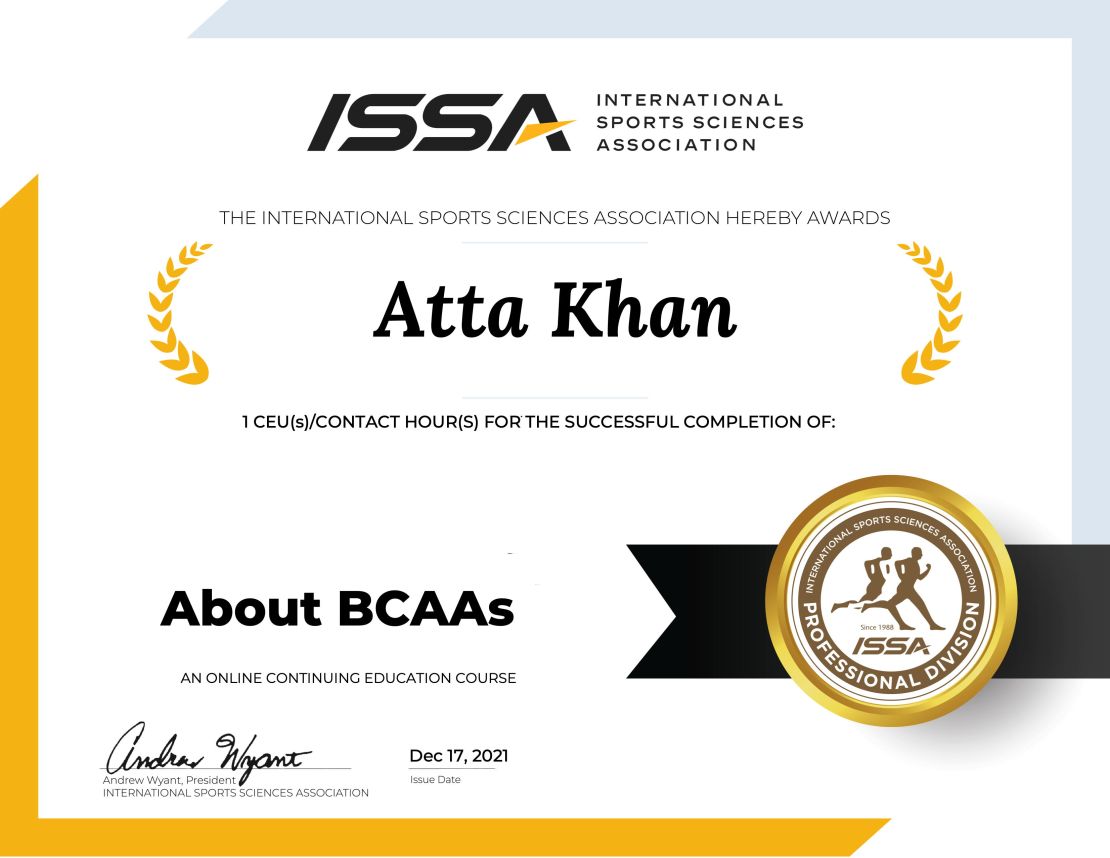
Branched-chain amino acids, leucine, isoleucine, and valine, when present in adequate concentrations, are supposed to maintain plasma glutamine concentration and cytokine (interleukin-1) production, while attenuating lymphocyte proliferation. This corresponds to maintaining the integrity of the immune system. Cytokines regulate immune and inflammatory responses and glutamine maintains skeletal muscle protein when the body's need for glutamine exceeds its natural production.
Prolonged, exhaustive exercise may cause the activity of the immune response cells to be suppressed. During such periods of metabolic stress, increasing the amount of glutamine made available would increase protein synthesis, maintain glutamine production, thereby maintaining activity of the immune response cells. If glutamine is not available, muscle catabolism (degradation, breakdown) proceeds and reductions in plasma glutamine concentration are likely, leaving the body's immune system more susceptible to invasion.
BCAAs also compete with tryptophan for transport across the blood-brain barrier. If tryptophan wins, it is converted to 5-hydroxytryptomine, leading to an increase in serotoninergic neurotransmitter activity. It is well known that serotonin-like activity causes central fatigue (the "Central Fatigue Theory").
Combining Supplements
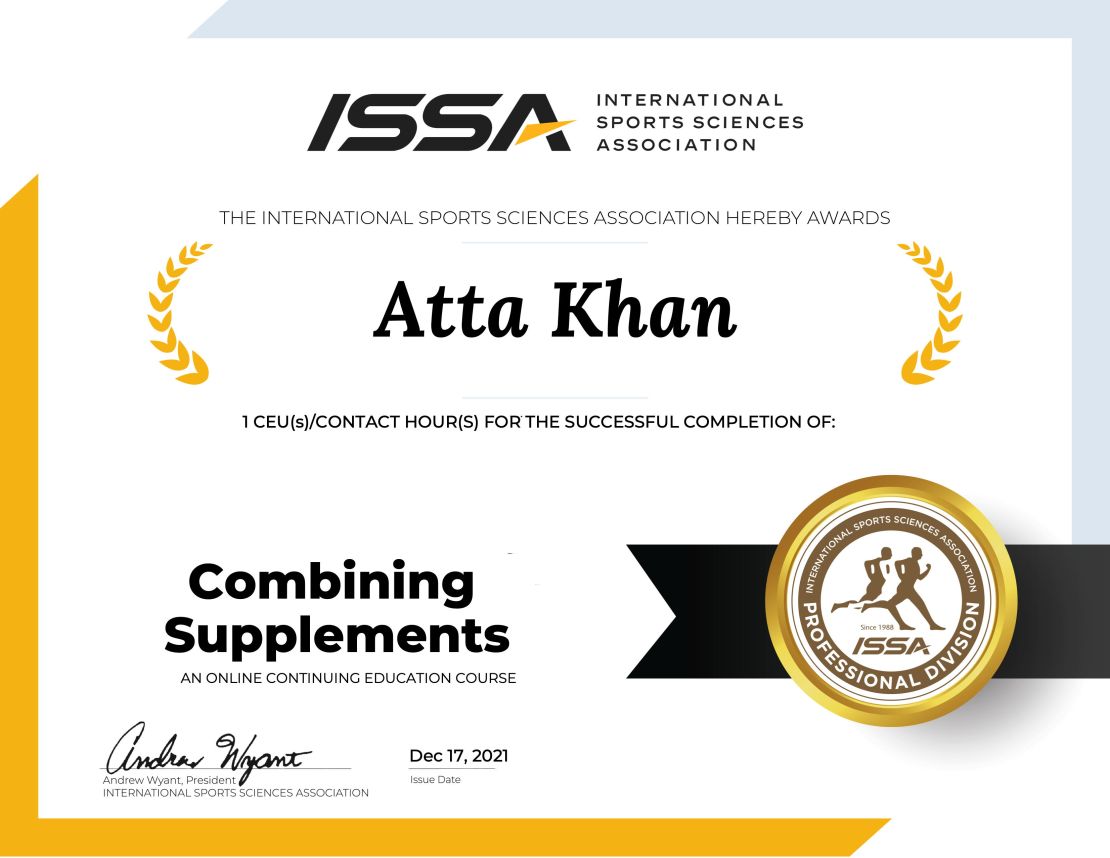
It is common for individuals who experiment with supplements to incorporate two or more products into their daily routine. The mentality that if one is good, two must be better, is a purveying thought process in many supplement users. We like to think that if we take two supplements, the combined effect is equal to the sum of their individual effects. In other words, one plus one equals two. This is the simple and logical scenario, where the effects of each supplement are independent of the other.
But what we do not always realize is that supplements, even natural ones, are chemicals, and that combining two or more can alter the intended effects in potentially undesirable ways. Unfortunately, the available peer-reviewed clinical research on the effects of taking multiple supplements simultaneously is scarce; nonetheless, for educational purposes the point to keep in mind is that the use of dietary supplements is not always simple math. In fact, in the case of supplements, one plus one does not always equal two.
Hormones and Performance
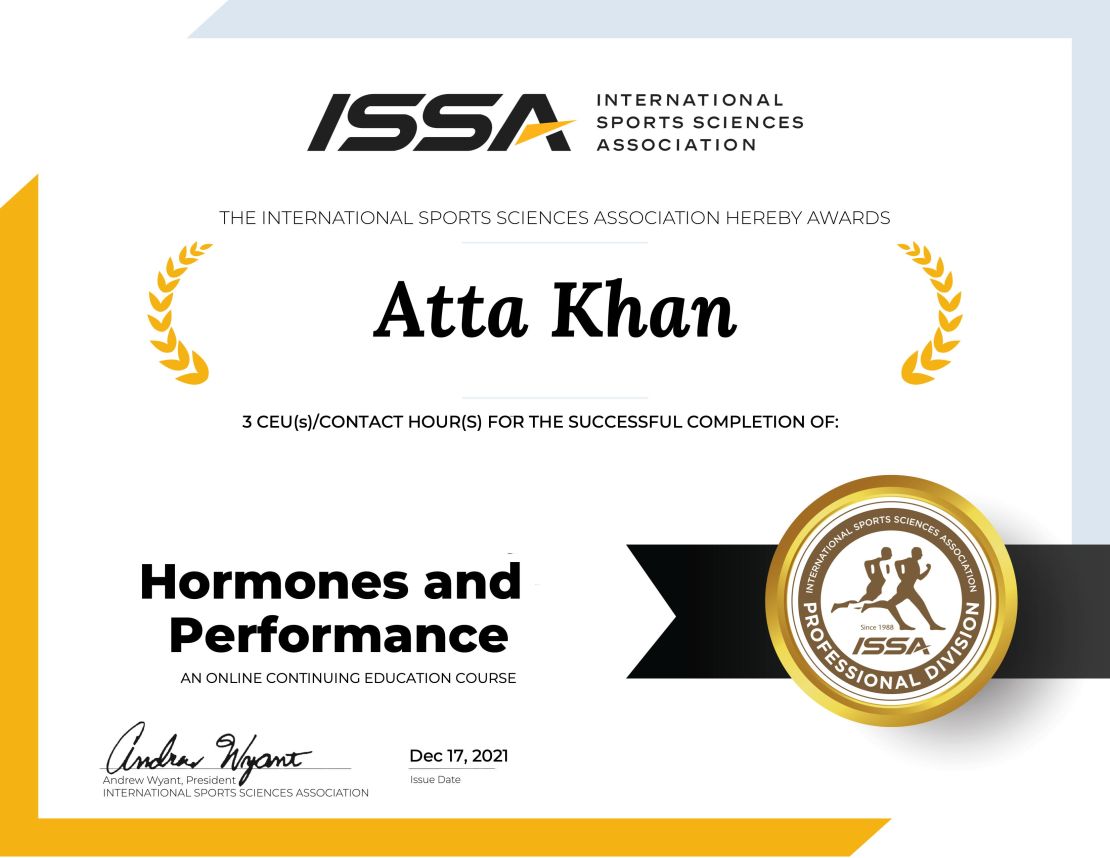
Understanding the critical role hormones play in their clients' lives and how to identify and create solutions for those women and men of any age who could benefit from hormonal adjustments.
Training Women
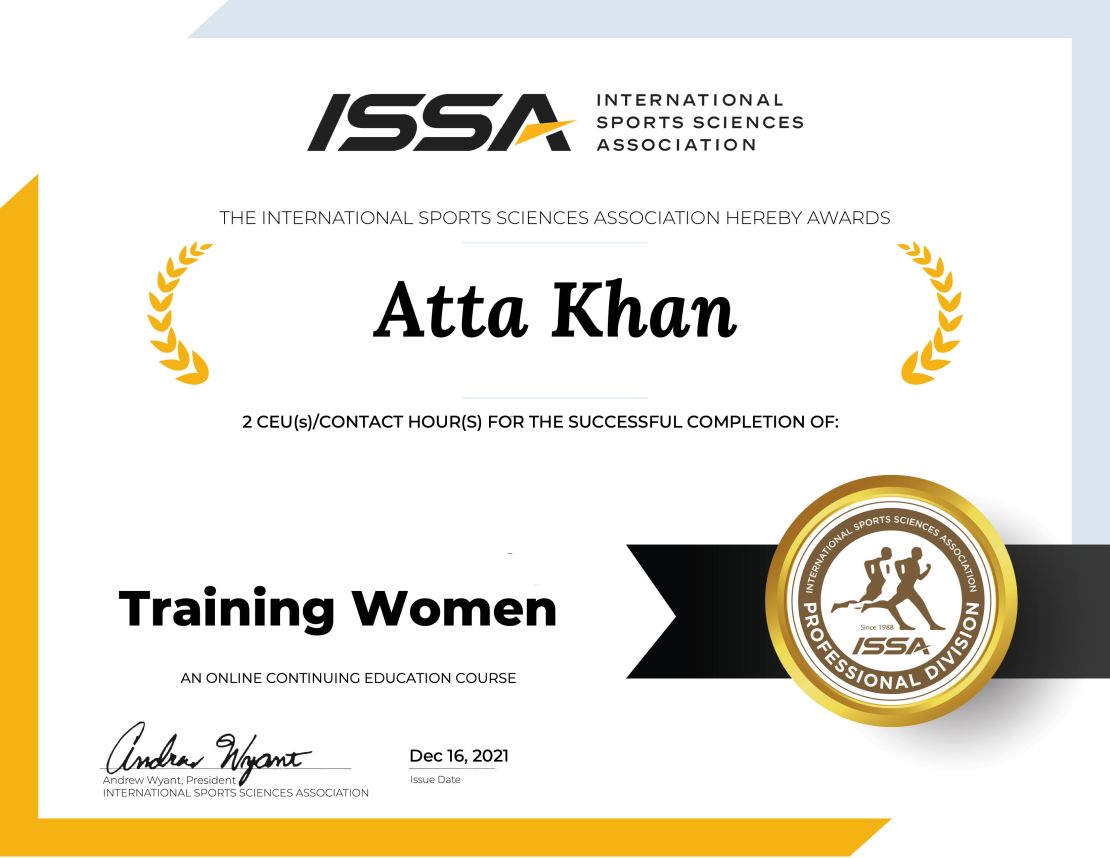
There are differences between strength training women and men.
It seems everywhere I look I see headlines or articles for women and fitness.
Is training a woman that much different than training a man? Like every other aspect in fitness, the answer is yes, but most of the time, no. Vern Gambetta, the former director of the Chicago White Sox says “Strength training for women is almost identical to that of men, given the same sport, age, group and conditioning goals.”
Guidelines or principles should be the same:
• Core strength before extremity, strength train movements instead of individual muscles
• body weight before external weight (unless they’re unable to use their own weight)
• strength before endurance (assuming all the neural or motor patterns are in place).
When creating a program consider these concepts:
• core strength and stability
• balance and proprioception
• agility and ground reaction forces
• pressing pushing, pulling and squatting movements
Keep in mind, there are some subtle differences to consider with females. Females mature earlier than males. Consequently, it is important to start strength training earlier, preferably before puberty. Therefore girls can begin with external resistance as early as 11 years, while boys should wait until they are 13. (1) Since females have less muscle mass on average than males, they are more susceptible to deconditioning.
Ketogenic Diets

High fat. Moderate protein. Restricted carbohydrates.
How the ketogenic diet affects the human body.
Super Foods

One of the recent trends in the nutrition community is the concept of “superfoods” as a source of vitamins and protein.
What if the foods that you put in your body made your performance better, reduced inflammation, protected you from disease, and made your skin look radiant?
I know that this sounds too good to be true, but some foods are so incredibly nutrient-dense and full of phytochemicals that they support the important functions of the body, have antioxidant properties, and promote overall wellness. Other foods, particularly heavily processed foods and fast food, can actually weaken your immunity, lead to digestive problems, make you break out, and even cause mood swings and migraines. Today we will be focusing on the nutritional powerhouses and learning how to incorporate them into your diet. You have probably heard these referred to as “superfoods.”